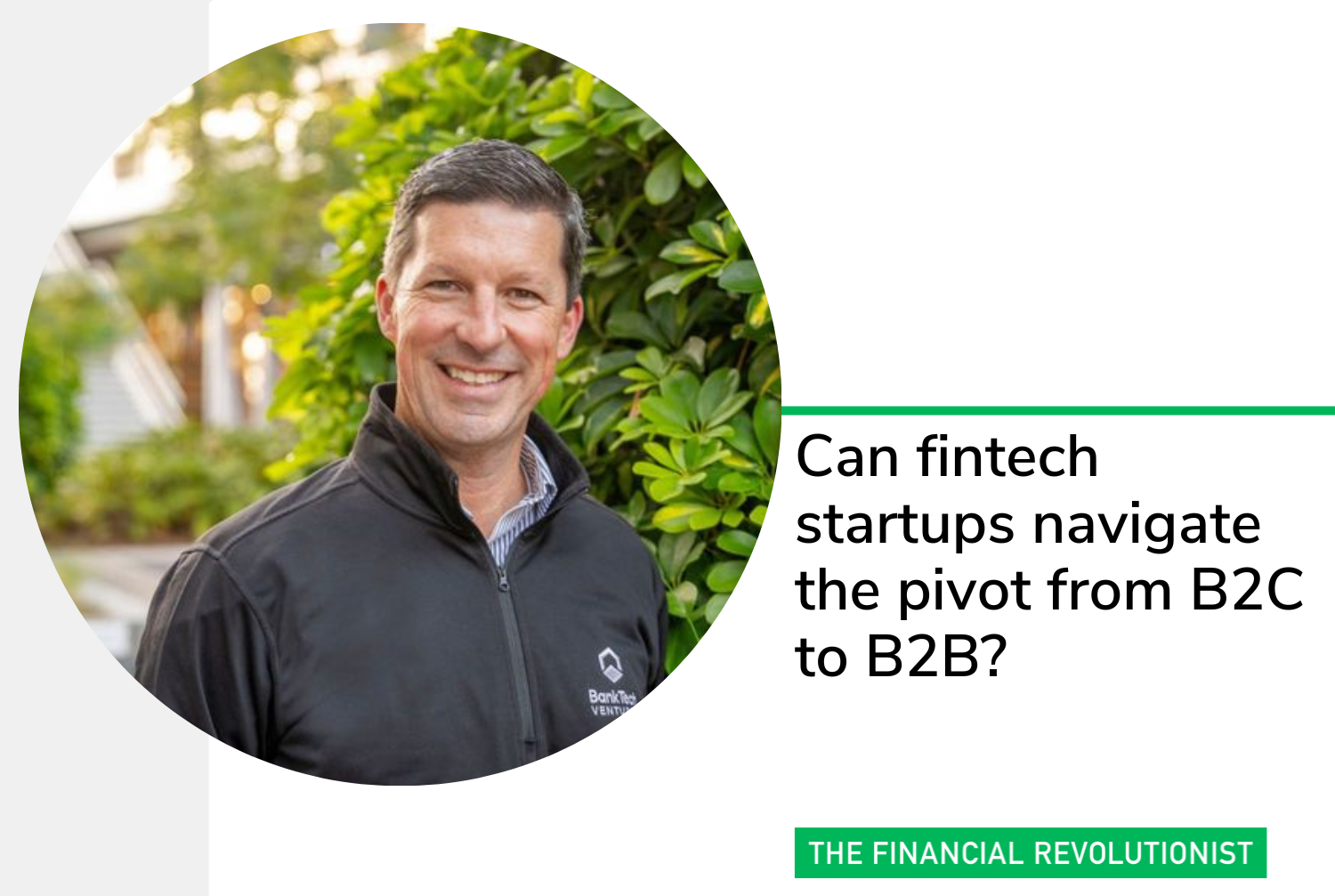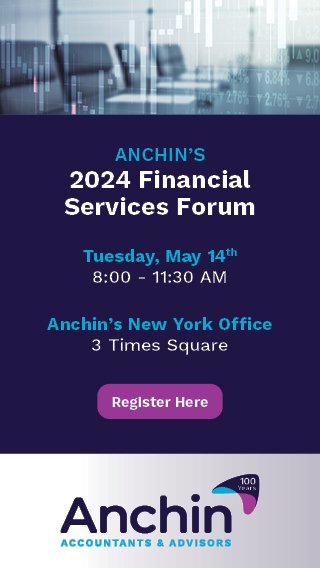Can fintech startups navigate the pivot from B2C to B2B?
/Carey Ransom is a SaaS entrepreneur, executive, investor and advisor, and has started, grown and/or led 8 B2B and consumer SaaS companies during startup and growth phases. He is currently President of Operate and the Managing Director of BankTech Ventures, a newly launched strategic investment fund focused on compelling technologies for community banks, and founded and funded by leaders in the community bank ecosystem.
When it comes to startup business models and customer types, opinions and preferences are far and wide. I have frequently heard the adage that a young entrepreneur’s first startup is always a business-to-consumer (B2C) one, and their second is a business-to-business (B2B) one. I’ve had the opportunity to work across the spectrum in business models and customer types. Whether it’s selling to the largest enterprises on the planet or trying to sign up individual consumers, every customer segment has its opportunities and challenges. And the business models can also vary widely from recurring subscription to one-time purchase, and wholesale/retail to revenue share.
Recently, we’ve seen a number of consumer fintech startups pivot from going directly to consumers to trying to sell to banks or through them to reach consumers—or, as we would say, from B2C to B2B2C. Can it work as a better strategy and business, or is it desperation? My hot take would be “it’s desperation.” But it’s some of both, and potentially a better strategy.
Throughout my journey, I’ve seen entrepreneurs change their business model and value proposition in the middle of their startup journey—sometimes driven by investors, or in financial/survival desperation, or even due to new information in an enlightened pivot. Ninety percent of startups fail, according to most statistics, and the main reasons (from CB Insights) are “no market need” (not finding product/market fit), “ran out of cash” (which also means enough time to find the need), “not the right team” (or the team changes required for a pivot), and “getting outcompeted” (someone learned first, built a better team, executed better, etc.).
As these fintech startups that initially targeted direct-to-consumer (D2C) and direct-to-small business markets are undergoing strategic shifts toward B2B licensing revenue and distribution models, they will have to address a number of new questions and challenges, so I decided to try to provide some guidance.
And while this transition is usually fueled by various factors, including evolving funding environments and investor sentiments, and recognition of the complexities and costs associated with acquiring and retaining individual customers, there is more needed for a pivot to succeed than just running away from other problems. In the last couple of years, many fintech venture capital subsidies for growth and figuring out their business model have dwindled. Startups have started exploring more partnerships with existing financial institutions and established distribution channels to reach a broader audience. However, the success of this change is not assured and hinges on several key factors.
Here's a checklist I’ve developed to inform whether to pivot, how to determine a course of action, and what will probably have to change. This article is broken up into 4 parts, and if you like Part I, then look for the next three parts in the coming weeks.
Part I | The driving forces behind a potential pivot
1. Underlying business realities
Many fintech startups have experienced the challenge of building and sustaining their current model, as their acquisition cost, payback period, and customer lifetime value math may not work. Or, they may be lacking the capital to scale the current business or withstand the operating cost and cash flow timing issues in their current model. If the business is capital-challenged, then a pivot is definitely a consideration, but first I’d encourage investigation of three key questions:
Does the shift to a new model actually make the math better or just attempt to shift costs to someone else? Ex: If your acquisition costs are too high, are you sure it’s any better or can be for an existing bank if you partner?
Are there strategically aligned partners who are more efficient or have better cost structures to bear some of the costs? Ex: If your customer service costs seem too high, you should understand why and what would be required to reduce them. The answer is not always scale.
What might actually unlock a more sustainable and profitable business? Ex: The answer is almost never “more money.”
2. Customer acquisition challenges
Acquiring and retaining individual customers can be a resource-intensive endeavor. Fintech startups recognize the difficulties of competing for customer attention in a crowded market. By pivoting to B2B, they may be able to leverage the existing customer bases of financial institutions and reach a larger audience more efficiently. Or at least that’s the theory. Some key questions to answer first:
Does your product help the potential partner accomplish more than just something else to sell to their existing customers? Ex: It should, as they rarely lack for things to cross-market or up-sell.
What is preventing the existing player now or in the future from building and offering the capability themselves? Ex: Maybe they tried in the past, or shut down this business line, and there are likely reasons you should understand.
How much value will you have to give to the B2B customer or distribution partner to make it work for them? And does that even work for you and your business? Ex: There is an economic “pie” in every business. Can yours be carved up acceptably to everyone, and still create positive value?
3. The need for scalability
B2B models may offer a more scalable approach, allowing fintech startups to reach a broader market without the need for stand-alone marketing, onboarding, and customer support efforts. Collaborating with existing financial institutions provides access to established networks, enhancing the potential for scalability. As it goes, instead of having 10,000 direct customers, the company could have 100 customers and each of them could have 1,000 of their own customers, creating a business 10 or 100 times larger in impact. Key questions to answer here:
Are there a number of business customers or partners who already work with your desired end customers? Ex: The answer is likely yes, and you need to understand the market dynamics: small # of large partners, large # of small partners, etc.
What is the nature of the relationship with their customers? Ex: Do they have sticky, longstanding relationships, or is it highly transactional, high churn, etc.?
Would they want and see the value from your capability in their product/service mix? Ex: Can you provide true differentiation or enhancement to them (or do you just think that)?
Do they have existing customer marketing, onboarding, and support functions that can be effectively leveraged? Ex: How good are they in areas that you need them to be great at for the partnership to work for everyone?
If the answers to many of these questions are positive and clear, then a pivot might be warranted and successful. Additionally, I’d also strongly advise an exploration and validation of the changing business model, whether it’s a B2B licensing and support model, a revenue share partnership, or more of a wholesale/retail situation. The answers to that will inform what will need to change in the underlying team and business operations to make the pivot potentially successful. We can start to delve into that in my next article.






